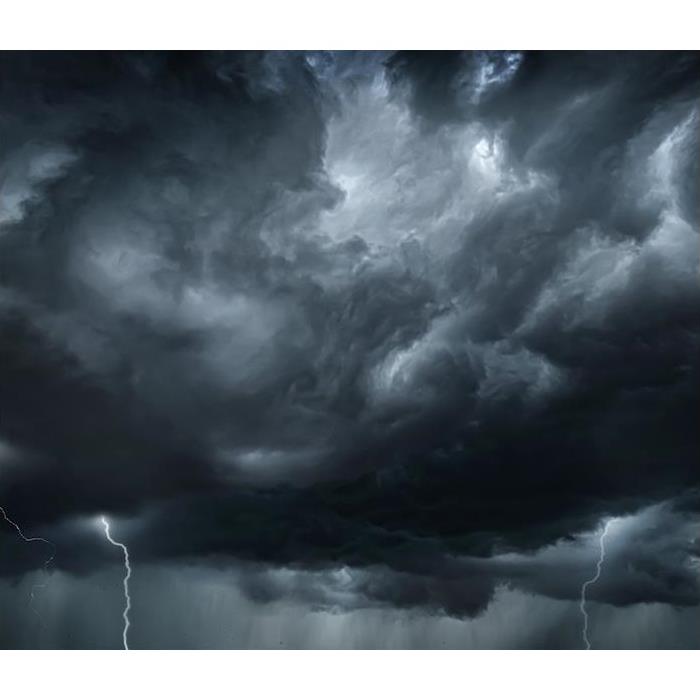Don’t Let Storms Rain on Your Parade
6/1/2022 (Permalink)
Storms can be intimidating and even life-ruining. They can lead to severe lightning strikes, heavy rain, hail and strong winds. There are around 100,000 thunderstorms throughout the United States every year, so thunderstorms roll around fairly frequently throughout the country.
Due to proximity to the coast, Tallahassee often suffers the effects of disturbances coming from the Gulf of Mexico. You never know when a hurricane could build up steam and strike your home or neighborhood. In the event this happens, you want to be prepared for anything.
Here are some of the things you need to think about ahead of time. Preparing for serious storms will help you reduce their negative impact on you and your home.
Your Severe Weather Communication StrategyCommunication with everyone in your household is key when the weather turns bad, as is receiving notifications from authorities. First of all, it’s important to understand the difference between watches and warnings so that you know when to simply remain vigilant and when to seek shelter quickly.
It’s also a smart idea to have multiple ways to receive alerts from authorities, such as your cell phone and an NOAA weather radio.
Lastly, establish your family’s communications strategy. Whenever the weather turns bad, make sure everyone knows where to go in your house (such as the basement or bathroom).
Furthermore, make sure to make a plan for communication in case one or more family members are away when a storm hits—that way everyone knows when and how to check in and mark themselves safe.
Your Severe Weather Emergency KitIn your storm shelter area at home, you should have an emergency kit that contains all the essentials your family needs for at least three days of sheltering. Make sure your kit includes nonperishable food, water, flashlights and batteries, as well as anything else you might need to stay safe and comfortable during the storm.
Your Severe Weather Aftermath ChecklistOnce the storm is gone, start the next step of evaluating your safety plan and addressing any damage to your home. You should go ahead and do a run-through of your property, looking for damage. Pay close attention to vulnerable areas of your home, such as your roof and window and door seals.
If there’s damage, you know what to do next. You can reach an expert at SERVPRO of Tallahassee at any time, day or night. We will get to work restoring your home as soon as we get on scene.
As soon as you can get your family gathered, make sure you do a safety audit. If you can improve your communications, emergency kit and any other aspects, you will be even better prepared to deal with severe weather the next time it occurs.
If you discover storm damage to your home or business, you can count on SERVPRO to handle the restoration. We’re here 24⁄7 to spring into action—get in touch with us today.
The Types of Flooding to Watch Out For | SERVPRO® of Tallahassee
4/18/2022 (Permalink)
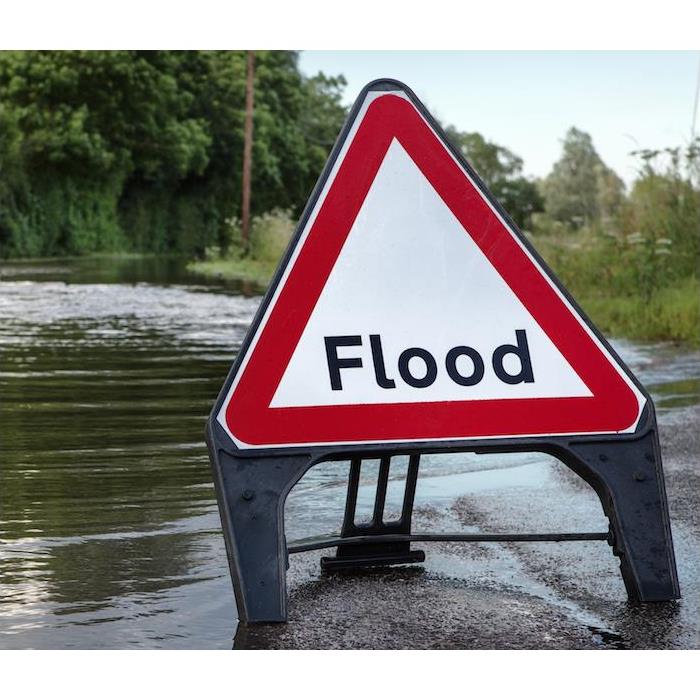 Don't risk a flooded road.
Don't risk a flooded road.
The most common natural disaster in the world is flooding, and it claims more lives in the United States per year than hurricanes, tornadoes or lightning. It can affect everything from individual homes where property collects excess water to wide swaths of communities and cities.
Flooding affects all 50 states and every U.S. territory, but there are similarities in types and causality among all them. There are three common types of flooding, and they happen for four typical reasons.
3 Types of Natural FloodingFlash floods are common, and they happen when heavy rain passes or sits over an area and overwhelms the ability of the ground to contain the moisture. Excess water runs off and takes garbage cans, cars and more with it.
River floods are exactly what they sound like. When there’s too much water for a river’s banks to hold, the water spills over the sides and causes destruction.
Coastal floods happen in areas next to large bodies of water, when storm surges or cyclonic activity causes ocean or gulf levels to rise to flood levels.
The 4 Most Common Causes of Natural FloodingHeavy rainfall. Storms with excessive rainfall, or storms that sit and rest over an area for an extended period, can cause flash floods or river flooding. Urban areas are more at risk for rain floods, because the higher percentage of concrete and asphalt means there’s a lack of soil to soak up all that water. Heavy rainfall hit Tallahassee in November 2021, leading to extensive flooding in homes.
Oceanic activity. Storm surges, hurricanes and rising tides can cause water levels to rise in waves, which can invade coastal communities and wreak havoc.
Dams and levees failing. The most notable example of this in recent history would be the disastrous levee breaks during 2005’s Hurricane Katrina. Levees and dams fail when cracks occur or excess pressure overtakes the dam’s ability to contain the surge of water behind it.
Snowmelts and ice dams. In areas of the country where heavy snow and prolonged freezing temperatures are common, snow and ice can build up over a winter’s time, and when they start to melt, they cause rivers of water to flow through area communities. Ice dams or ice jams happen when rivers become blocked by built-up ice being carried downstream, causing the banks to overflow.
Regardless of the cause of the flooding, SERVPRO has the tools and teams to help your home or business recover from its disastrous effects. Contact us anytime when flooding or water damage makes a mess in your life.
The Numbers Don’t Lie About Water Damage
12/16/2021 (Permalink)
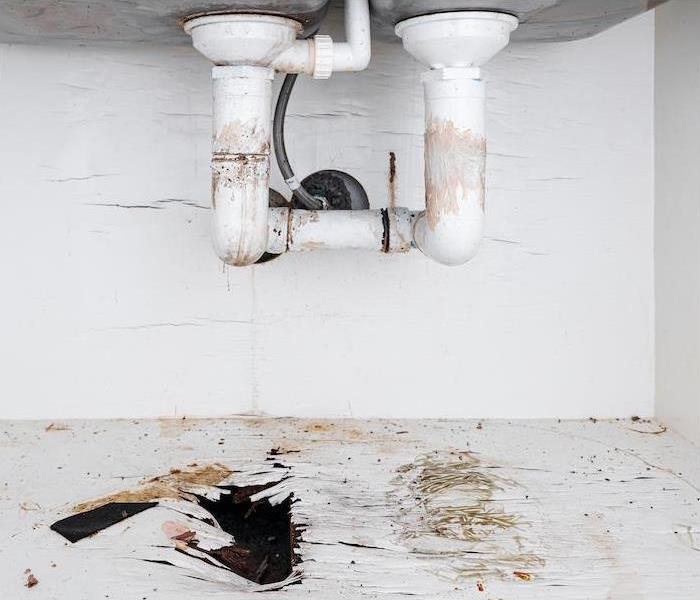 Leaking Sink creates damage to vanity
Leaking Sink creates damage to vanity
Remember that movie from a couple of years ago where there was a big purple guy with a massive chin, and he was going to destroy half of everything? Then there was a team of heroes who fought to stop him and his destructive, “inevitable” plan? Well, you may not have realized it at the time, but that movie was less a story about good and evil and more a story about the struggle going on even now in your home against the prospect of water damage.
Just ask the directors and they’ll tell you. No way we would make something like that up.
The heroes are the plumbing system in your home, and the “inevitable” foe? You guessed it; that’s water, looking for any and every opportunity to break the bonds of your pipes and wreak havoc on your floors and foundation.
All jokes aside, the most seemingly unstoppable disaster you face as a homeowner is water damage. It’s one of the most likely insurance claims you’re likely to make.
That’s why it’s so important to keep your heroic team of pipes and sewer lines well-equipped and maintained—so that they can fight the good fight against this destructive foe.
Let’s examine your predicament.
24. This is the percentage of all home insurance claims that are based around water damage—almost a fourth of all claims. Out of every 50 homeowners in the country, one of them will file a water claim each year.
48. You have this many hours, if that, to stop mold growth after a water event.
98. This is the percentage of homes with basements that will experience water damage in them at some point. There’s almost no avoiding this one, short of lucking out and moving repeatedly at just the right time.
10,234. The average water damage claim costs this many dollars. Water damage can happen quickly, and on a massive scale.
14,000. This is the number of U.S. citizens who are hit by a water damage event each day. That means something is happening every six seconds around the country.
13,000,000,000. That’s a lot of zeroes, and it represents the gigantic costs of water damage repair each year in the United States alone.
So is there hope, or is water damage indeed inevitable? The good news is that your attention to regular maintenance and fixing leaks is directly proportional to your ability to prevent many types of water damage. So stay the course.
If water damage catches you off-guard and leaves you all wet, you’ve got help on your side. Contact SERVPRO to see how we can quickly and fully restore water damage to your home or business.
Water damage event while homeowner was out of town!!
8/1/2018 (Permalink)
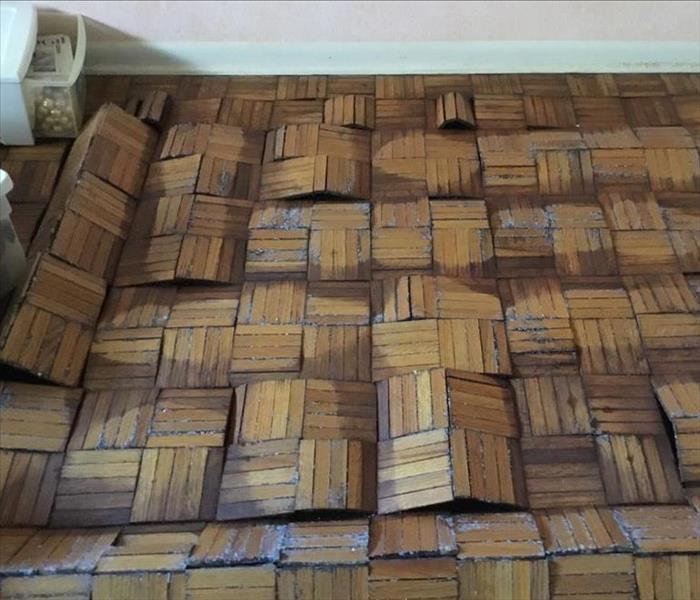 In the featured photo you can see extensive water damage that left the floor damaged beyond repair, and visible mold present.
In the featured photo you can see extensive water damage that left the floor damaged beyond repair, and visible mold present.
SERVPRO of Tallahassee would like to take the time to give our residents and community members some advice since it is summer and lots of you folks may be traveling out of town.
One of our Tallahassee residents was away from their home for a long time. During their vacancy, a water damage event occurred and went unnoticed. When the homeowner returned to their home, they found it in ruins. Ceilings had collapsed on the first floor, as water flowed from an upstairs toilet for what looks like days. The home had so much water damage inside that you could see signs of water flowing down the brick of the home on the outside. What is even worse is that the water caused damage to the HVAC system and the system shut down. At that point the home became a breading grounds for microbial growth to start forming and it did, as you can see in the picture. Of course once SERVPRO of Tallahassee received notice of the water loss and mold damage our production technicians were on site immediately and went to work to restore this Tallahassee home.
Our advice to our customers, if you go out of town, please have a trusted friend or family member or even a property manager go check on your property as frequently as possible. It is very important to catch water damages when they happen so your home suffers less damage.
Flooding and water emergencies don’t wait for regular business hours and neither do we!!!
7/31/2018 (Permalink)
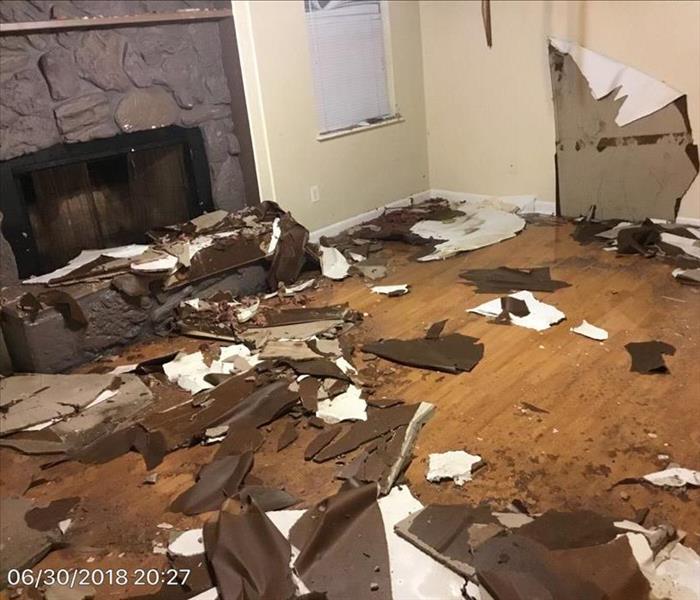 Fallen debris from collapsed ceiling on first floor after extensive water damage caused by supply line leak on second floor.
Fallen debris from collapsed ceiling on first floor after extensive water damage caused by supply line leak on second floor.
Need Emergency Service?
Call SERVPRO OF TALLAHASSEE 24/7 @850-878-8885
SERVPRO of Tallahassee provides emergency cleaning and restoration services 24 hours a day, 7 days a week—including all holidays. Our trained technicians are on standby to help restore your home.
Faster To Any Size Disaster
Flooding and water damage is very invasive. Water quickly spreads throughout your home and gets absorbed into floors, walls, furniture, and more. Our team arrives quickly and starts the water extraction process almost immediately. This immediate response helps to minimize the damage and the cleaning and restoration costs.
Water Damage Timeline
Within Minutes
- Water quickly spreads throughout your property, saturating everything in its path.
- Water is absorbed into walls, floors, upholstery, and belongings.
- Furniture finishes may bleed, causing permanent staining on carpets.
- Photographs, books, and other paper goods start to swell and warp.
Hours 1 - 24:
- Drywall begins to swell and break down.
- Metal surfaces begin to tarnish.
- Furniture begins to swell and crack.
- Dyes and inks from cloth and paper goods spread and stain.
- A musty odor appears.
48 Hours to 1 Week:
- Mold and mildew may grow and spread.
- Doors, windows, and studs swell and warp.
- Metal begins to rust and corrode.
- Furniture warps and shows signs of mold.
- Paint begins to blister.
- Wood flooring swells and warps.
- Serious biohazard contamination is possible.
More Than 1 Week:
- Restoration time and cost increase dramatically; replacing contaminated materials and structural rebuilding may be extensive.
- Structural safety, mold growth, and biohazard contaminants pose serious risks to occupants.
No worries - Our staff is highly trained in property damage restoration. From initial and ongoing training at SERVPRO’s corporate training facility to regular IICRC-industry certification, rest assured our staff is equipped with the knowledge to restore your property.
To provide peace of mind we invite you to Meet our staff – just hold Ctrl key and click on the link.



 24/7 Emergency Service
24/7 Emergency Service
